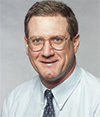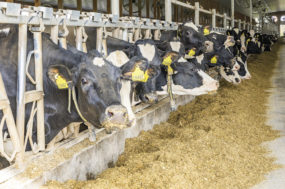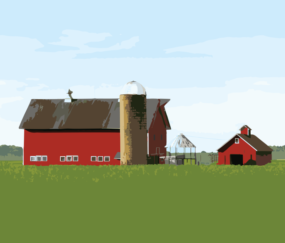This would allow time for a forage winter cereal harvest in mid- to late-May prior to sorghum planting. Forage sorghum also has comparable forage quality to corn silage for most parameters except for starch, which is typically lower in forage sorghum. The main question for this research was: Can forage sorghum be harvested in time for establishment of a fall cover crop or winter cereal double-crop in New York? To answer this question, we conducted seven trials in central New York from 2014 through 2017 to evaluate the impact of harvesting at the boot, flower, and milk growth stages versus the traditional soft dough stage on the yield and forage quality of a brown midrib (BMR) forage sorghum variety.
Field trials
Seven trials were planted between early June and early July on two Cornell research farms in central New York. Sorghum was planted at a 1-inch seeding depth and 15-inch row spacing (15 lbs/acre seeding rate). Two N-rates as urea treated with Agrotain (Koch Agronomic Services, LLC, Wichita, KS) were broadcast at planting (100 and 200 lbs N/acre) with the goal of having a non-N limiting scenario for these sites. Alta Seeds AF7102 (Alta Seeds, Irving, TX) was used for all trials. Forage sorghum was harvested at the boot, flower, milk, and soft dough stages.
Harvest was done using a 4-inch cutting height. Measurements included dry matter (DM) yield and forage quality, including total digestible nutrients (TDN), neutral detergent fiber (NDF) analyzed on an organic matter basis with amylase, 30-hour NDF digestibility (NDFD30), non-fiber carbohydrates (NFC), acid detergent fiber (ADF), dry matter (DM), crude protein (CP), and starch content.
Forage quality parameters were entered into the Cornell Net Carbohydrate and Protein System (CNCPS) version 6.55, a ration formulation software, to predict how sorghum harvested at various growth stages would perform in a typical dairy total mixed ration (TMR) compared to corn silage. Forage sorghum, at each of the different growth stages, was substituted for 0, 25, 50, 75, and 100 percent of the corn silage fraction of the diet, and metabolizable energy (ME) allowable milk and metabolizable protein (MP) allowable milk were predicted.
Impact
Timing of forage sorghum harvest impacted both yield and forage quality. Yield did not increase beyond the flower stage for four trials or beyond the milk stage for one trial. For two trials, yield continued to increase until the soft dough stage. Averaged across all trials, yield increased from 4.8 tons DM/acre at the boot stage, to 6.0 tons DM/acre at the flower stage, and 6.8 and 7.1 tons DM/acre at the milk and soft dough stages, respectively (Figure 1).
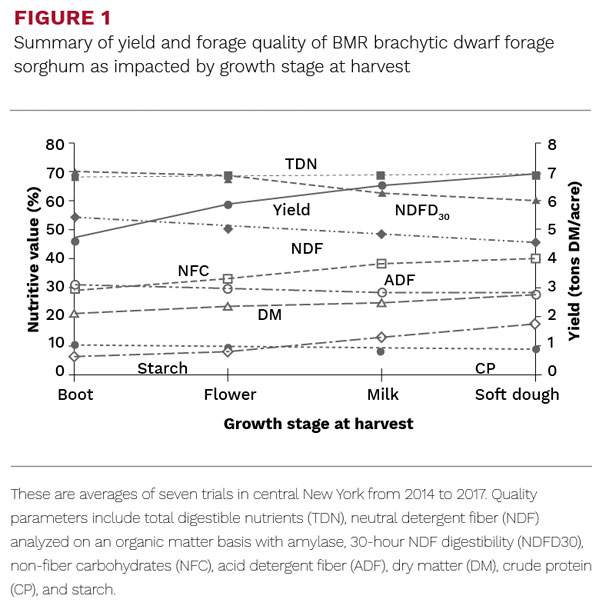
These results suggest that, in most cases, forage sorghum can be harvested at the flower or milk stage without losing a substantial amount of yield. With later harvests, forage quality parameters of DM, starch, and NFC were increased while CP, NDF, and NDFD30 were decreased.
Without adjusting for DM intake, 100 percent inclusion of forage sorghum harvested at the soft dough stage resulted in predicted ME allowable milk (90 lbs) that was similar to the 100 percent corn silage TMR (92 lbs) across sorghum inclusion amounts (Figure 2A).
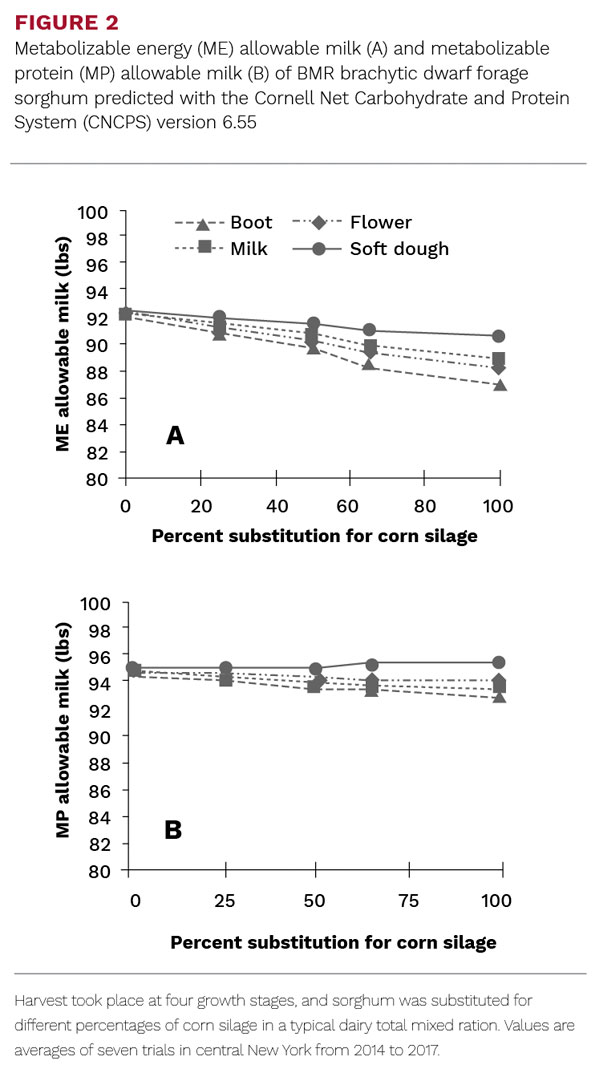
The lower starch content of less mature sorghum resulted in reduced ME allowable milk at greater inclusion in the diet, averaging 87, 88, and 89 lbs for 100 percent inclusion of sorghum at the boot, flower, and milk stages, respectively. Predicted MP allowable milk for all sorghum growth stages was similar to that of corn silage (Figure 2B).
Implications
Forage sorghum can be a good alternative to corn silage in double-cropping rotations with winter cereals grown for forage in New York. The BMR forage sorghum in this study could be harvested as early as the late-flower to early-milk growth stage without losing significant amounts of yield. However, early harvesting did affect forage quality, resulting in greater NDFD30, NDF, ADF, and CP, and less NFC, starch, and DM.
Forage sorghum could replace corn silage in a dairy TMR, but energy supplements are needed if sorghum is harvested before the soft dough stage due to a lower starch content at the earlier harvest dates. Additional forage may also be needed in a sorghum-based TMR due to changes in fiber digestibility at different growth stages. The higher moisture content of less mature sorghum may also call for adjustments in chop length and/or silage additives, such as inoculants, for proper fermentation.
Acknowledgements
This work was supported by Federal Formula Funds, and grants from the Northern New York Agricultural Development Program (NNYADP), New York Farm Viability Institute (NYFVI), and Northeast Sustainable Agriculture Research and Education (NESARE). ![]()
For questions about these results, contact Quirine M. Ketterings at (607) 255-3061 or email Quirine M. Ketterings, and/or visit the Cornell Nutrient Management Spear Program website. Sarah E. Lyons, Quirine M. Ketterings, and Greg Godwin are with the Nutrient Management Spear Program at Cornell. Debbie J. Cherney and Michael E. Van Amburgh are with the Department of Animal Science at Cornell. Jerome H. Cherney is with the Soil and Crop Sciences Section of the School of Integrative Plant Science at Cornell. John J. Meisinger is with USDA-ARS Beltsville Agricultural Research Center. Tom F. Kilcer is with Advanced Agricultural Systems, LLC.
This article appeared in PRO-DAIRY’s The Manager in March 2020. To learn more about Cornell CALS PRO-DAIRY program, visit PRO-DAIRY Cornell CALS.
Recorded webinars
PRO-DAIRY regularly offers webinars in English and Spanish. These webinars are recorded and a full list is available at PRO-DAIRY Program - Webinars.
Spanish webinar topics include nutrition, reproduction, calving, milk quality, herd health, cow comfort, animal handling, and human resource management. Select webinar titles in English include:
DAIRY CATTLE NUTRITION
Creating the perfect dining experience
Current research and topics in feed bunk management.
Shredlage - What have we learned?
This webinar covers what shredlage is, research results, and current harvest recommendations.
MILK QUALITY
Robotic milking systems - Effective use of reports to monitor milk quality and maintenance
Robotic milking systems generate a tremendous amount of data that can be used for management decisions. It can be overwhelming. Dr. Rick Watters, Cornell University College of Veterinary Medicine, discusses how to use reports to pinpoint the information that can impact milk quality and maintenance management decisions.
FORAGE MANAGEMENT
Make the most of advances in forage management
Many exciting developments, from improved forage varieties, to precision equipment, to advances in the understanding of fiber digestibility, continue to enhance the value of forages in feeding programs. Here we address harvest and storage strategies that are at times the missing link to capitalize on these advances.
NUTRIENT MANAGEMENT
Preparing for manure spills and other emergencies on your dairy - Who is part of your response team?
This webinar is designed to help farmers and their consultants think about their emergency response team as it relates to manure spills and other on-farm emergencies. Mark Burger, Soil and Water Conservation District, shares the successful model they created in Onondaga County, New York. He highlights lessons learned, potential improvements, and how they connected to the county 911 system.
FARM BUSINESS MANAGEMENT
Valuing Farmland Proximity - methods for valuing proximity in farmland purchasing decisions
This webinar focuses on how to objectively assess the value of land proximity when making decisions about buying farmland. Professor Jenny Ifft, Cornell Dyson, is developing a data set of New York farmland transactions from 1999 to present. She is interested in determinants of New York and U.S. farmland values and its effect on farm profitability and structure.

